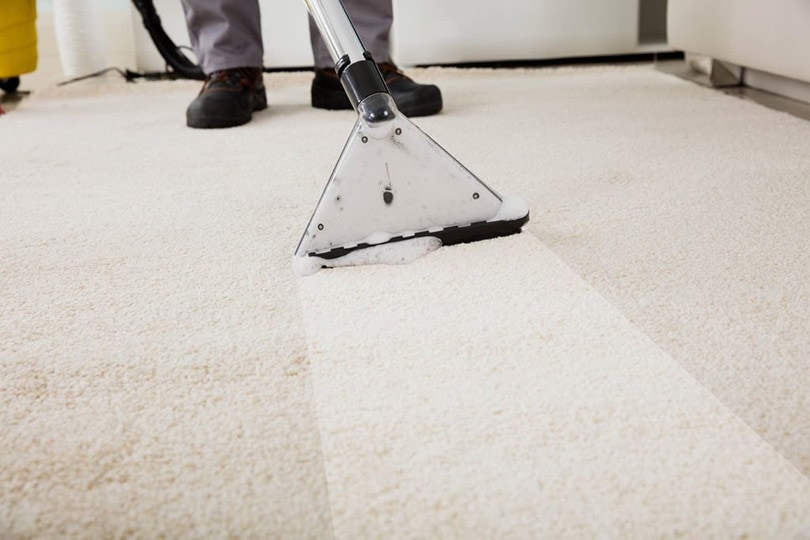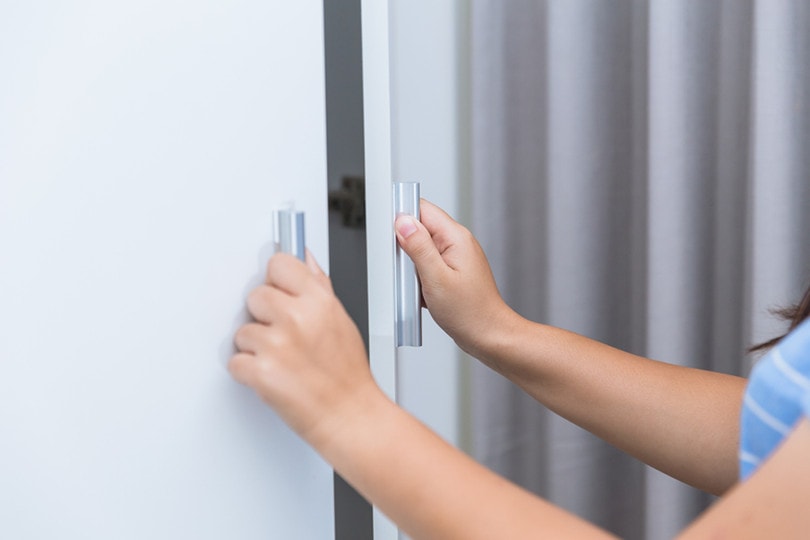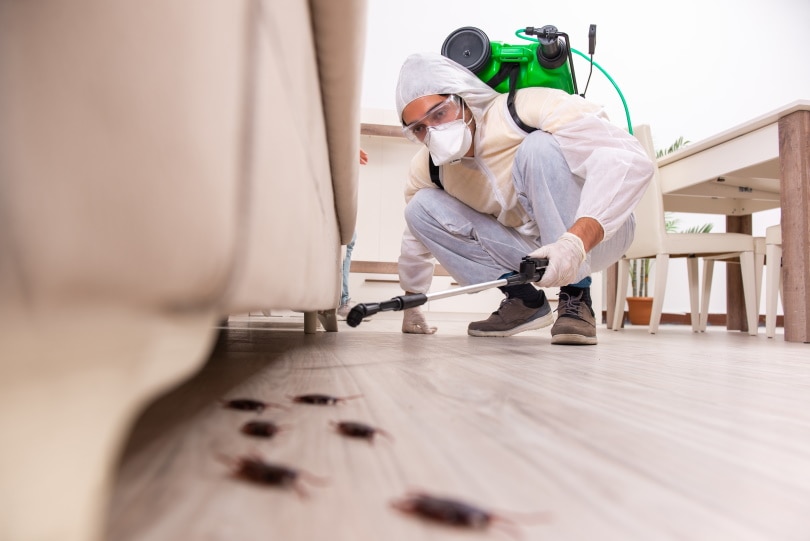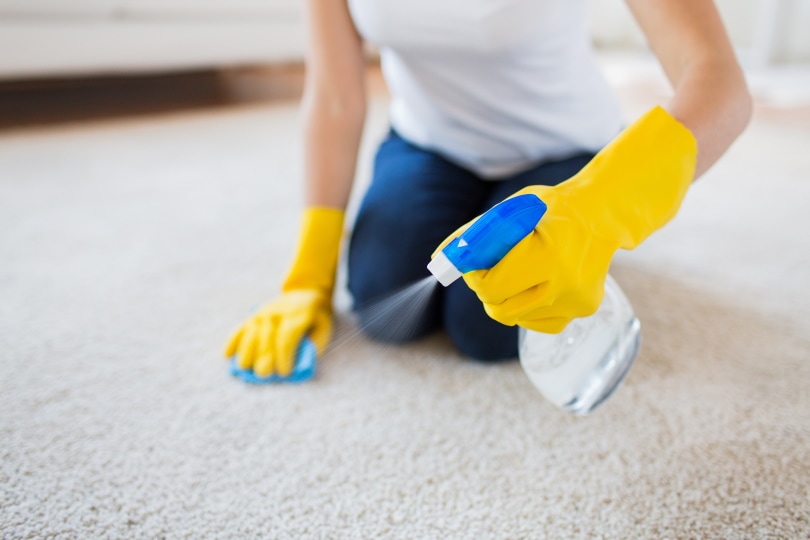Can You Flea Bomb An Apartment? Does It Work?
-
Pete Ortiz
- Last updated:

Flea bombs are effective against fleas and are available at an affordable price. They are popular in the US and are a strong remedy against a long list of insects (fleas included, of course). However, can you use a flea bomb in an apartment? Yes, but only if you follow safety precautions and get permission from the landlord.
But how safe is it to use a flea fogger, and should you solely rely on it, or there are other methods that are better? Keep reading to learn the answers to these questions and more!
What Is A Flea Bomb?
A flea bomb is widely used to describe chemical products (pesticides) specifically designed and formulated to kill fleas. Usually, they come in aerosol canisters and, once activated, release a mist (fog) into the room. All you have to do is activate the bomb, leave it alone for a couple of hours, and it will get rid of the fleas.
How Much Does It Cost?
Don’t worry; you won’t have to empty your bank account to get a flea bomb. A standard package costs $10 or even less, depending on where you live. Or, better yet, you could get a bigger package for $15–20. They are available at retail stores and include three 5-ounce cans for 15 ounces of flea foggers. That should be enough to treat the apartment and kill all the nasty insects.
What Kinds Of Permissions Do You Need?
First, you’ll have to run this by other residents that live in the apartment. Don’t buy a flea bomb unless you have their “blessing.” Next, get in contact with your landlord and ask for their permission. Even if you own the apartment, we still recommend reaching out to the person/company that owns the building to avoid any legal issues in the future.
The trickiest part is to find a day on the calendar when all your roommates/housemates can leave the apartment for at least 2–4 hours (preferably 5–6 hours). Once you work this out and get the green light, all that will be left to do is prepare the apartment and ensure you’re following all the necessary safety precautions.
Are Flea Bombs Toxic to Humans?
Yes, the active ingredient in a bomb that terminates fleas is hazardous to humans. It’s not strong enough to kill someone, of course, but the insecticide can cause severe consequences like nose irritation, headaches, dizziness, and allergic reactions.

What About the Pets?
Flea bombs are just as bad for pets as they are for people. That is why you have to double-check that no cat, dog, or other domestic animal is left in the house/room before activating the bomb. Once the aerosol canister starts spraying the toxic fog, it can hurt your four-legged friend immediately.
 Preparing The Apartment for Safe Bombing
Preparing The Apartment for Safe Bombing
Now that the apartment is empty, it’s time to prepare it for the bomb. Be very thorough! If you skip one of the following steps, the bombing won’t be as effective. Besides, you’ll risk ruining your hardware and appliances, not to mention setting the room on fire. Here’s what you should do:
Start By Vacuuming the Room
Before you yell, “Fire in the hole,” and activate the flea bomb, vacuum the apartment thoroughly. It is no secret that fleas like to set up bases in carpets, rugs, doormats, and upholstery. So, grab that vacuum and go over these areas several times. While that won’t eliminate every flea in the area, a powerful vacuum cleaner will be quite effective.
If you have a steam cleaner, use it instead. Over time, fleas develop resistance to chemical products, but they can’t do the same with heat. Adult fleas die in relatively mild temperatures (95ºF), and steam cleaners get hot enough to kill them.

Cover Your Furniture, Hardware, and Utensils
Make sure the bomb is placed as far from power outlets, light switches, and appliances that run on electricity as possible. You can use plastic drop cloths to cover your bed, chairs, clothes, and hardware, but don’t leave any food or utensils out in the open. This applies to your pet’s bowl and food, too.
Covering your belongings is essential, especially if you use more than one canister to flee the apartment. Don’t forget to cover all electronic devices, children’s toys, houseplants, and toiletries.
Seal the Apartment Shut
Every single door and window in the apartment should be tightly closed. If the mist finds a way to escape into the outside world, you’ll be very disappointed by the results. Furthermore, if you’re only bombing one of the rooms, the mist can leak into a different room. So, do your best to cover all the “exits”, including the tiny gap underneath the door(s).
You can put an old rag or towel under the doors to prevent seepage. The last step is to tag the room. Yes, we just talked about notifying everyone in the apartment and coordinating with them, but you can never be too safe. Most flea bombs include a tag in the package. Go ahead and stick it to the door.

Air The Room Out
As mentioned, flea foggers take 4 hours tops to complete the process. So, don’t enter the room any sooner. You can give it an extra hour or two just to be sure. Afterward, enter the apartment and open all the doors and windows to air out the chemicals. Again, wait for around an hour, and then you can move back in. Don’t clean the carpets, however; let the residue stay for 14 days to kill the fleas.
Can You Bomb One Room And Stay In The Apartment?
The United States Environmental Protection Agency (US EPA) recommends against that. Even if you followed our guide and locked all the doors, windows, and tiniest cracks, the fog can still find its way out. You probably won’t notice the symptoms immediately, but conjunctivitis, trouble breathing, and other serious side effects will follow.
If you have a respiratory condition, you’ll be at more risk. Bug bombs are known to cause respiratory reactions and asthma. In a severe case, you’ll need emergency medical aid. To avoid all that, vacate the apartment for 5 hours. That should be more than enough time, even for the strongest flea fogger.

How to Flea Bomb an Apartment: A Quick Guide
- Calculate the size (square footage) of the area you want to treat. Generally, one bomb is enough for one single room. But sometimes, you’ll need more.
- Read the instructions on the label. Yes, most bombs work the same way. However, we still encourage you to read the directions thoroughly.
- Stay out of the apartment for as long as the instructions suggest.
- If you’re bombing the kitchen, ensure all drawers and cabinet doors are open.
- Remove or cover any utensils and appliances from the area.
- Turn off all electric devices in the apartment, like the air conditioner, heater, or fan. Next, extinguish the pilot lights.
- Close the windows and doors; make sure the toxic fog doesn’t escape.
- Shake the flea bomb aerosol canister and place it on a piece of plastic in the middle of the room. Otherwise, the chemicals will damage the floor.
- Activate the bomb and leave the house.
Just How Effective Is a Flea Bomb?
This largely depends on the size of the room. The smaller the enclosed space, the easier it will be for the fog to reach the nooks and crannies and kill the fleas. Again, don’t forget to check the instructions; they’ll tell you how big of a room the bomb is intended to handle. Even if it does a decent job of killing the fleas, most eggs will survive; foggers are not great at eradicating an infestation.
However, if you use them in combination with a steam cleaner, as we discussed earlier, you can kill eggs, larvae, and adults. If you have pets, you’ll have to visit a veterinarian and have them remove all the fleas and their eggs from your dogs and cats. Otherwise, all your efforts will be in vain.
What Are the Alternatives?
Alternatively, you can treat the carpets and furniture upholstery with vinegar. It’s best to do it after you vacuum or clean the apartment. Vinegar is a strong cleaning agent that’s effective against fleas. Fortunately, fleas are attracted to light. Therefore, it might be a good idea to light a candle and put it right next to (or inside) a bowl full of vinegar and dish soap to invite the insects to their funeral.
Baking soda can also kill fleas, but you should be very careful when using it on carpets. It contains chemical components that might damage the fibers.

Conclusion
Flea bombing is the first thing that comes to mind when we find an infestation in the apartment. Flea bombs are widely available (you can get them at any local store) and do a decent job handling the problem. However, following the appropriate safety measures are necessary before using a flea fogger. Otherwise, you might hurt yourself or other residents in the apartment.
You’ll have to take time to prepare the room, get every single person and animal out, and make sure you’re using the bomb properly. If you’re not 100% clear on everything, go back to our detailed guide and follow the instructions closely. Happy bombing, and good luck with killing the fleas!
Featured Image Credit: triocean, Shutterstock
Contents


